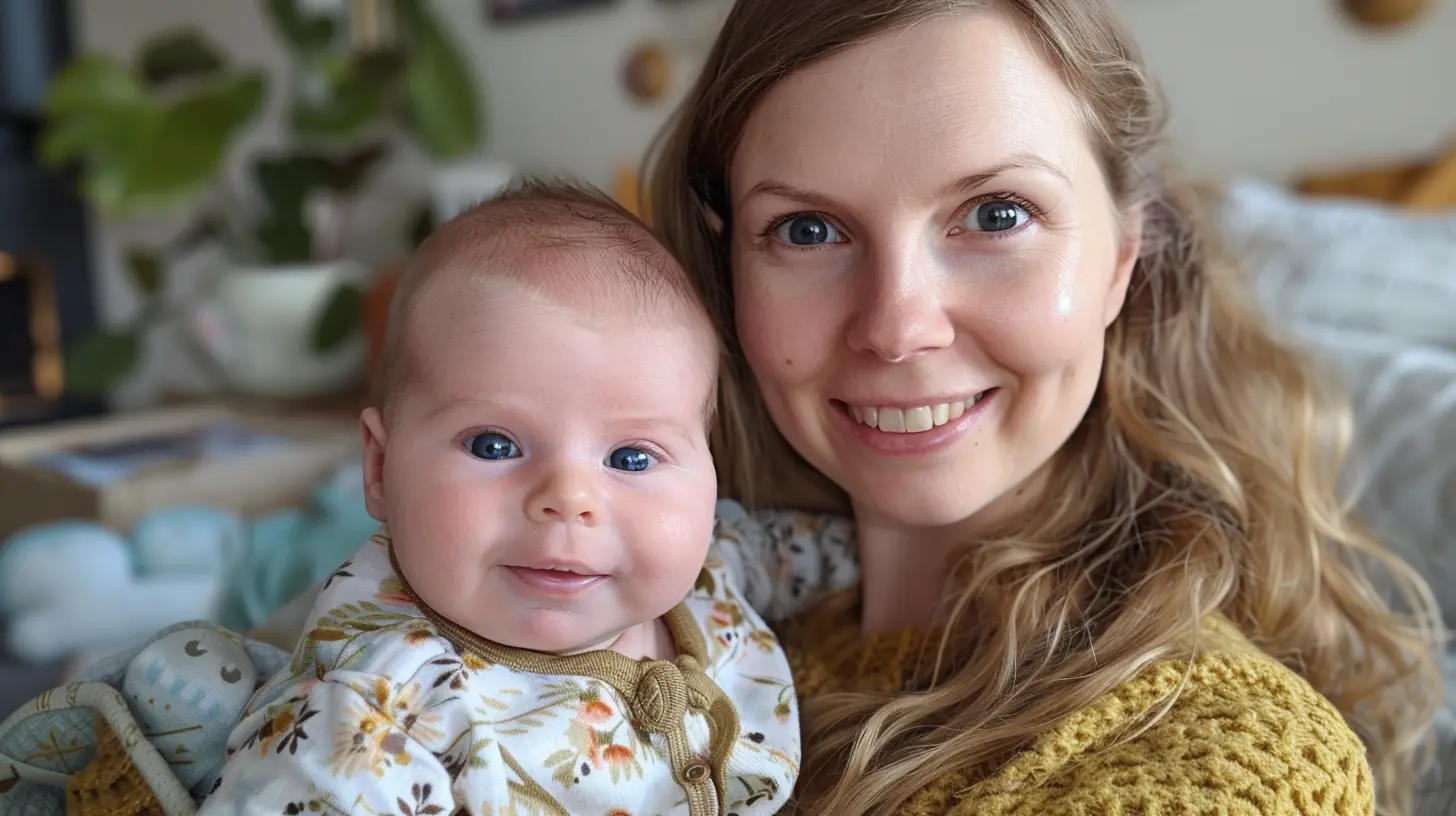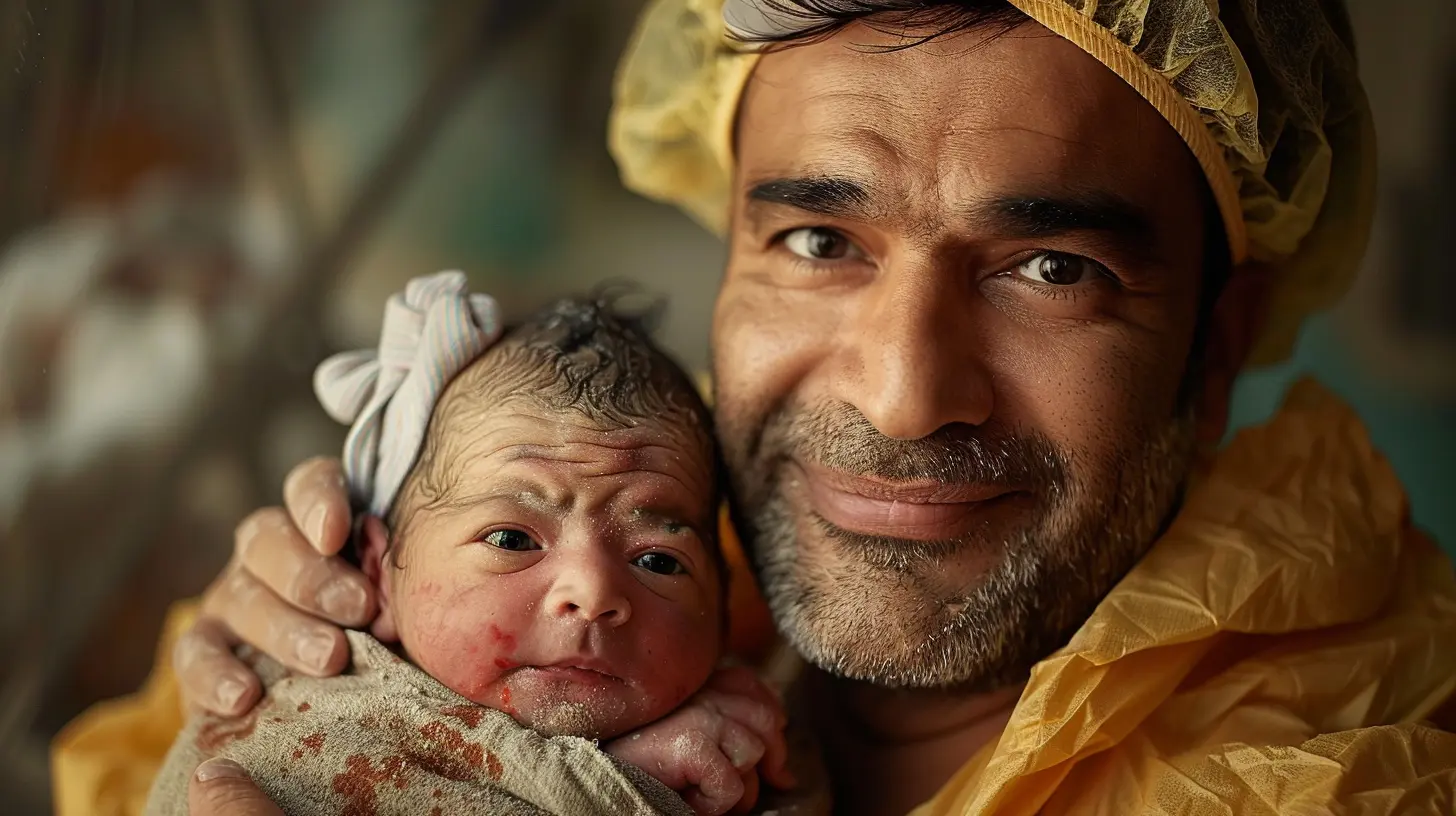The Importance of Skin-to-Skin Contact with Your Newborn
23 October 2025
Bringing a new baby into the world is magical, messy, emotional, and let’s be honest—it can be a little overwhelming too. Amid all the chaos of hospital rooms, sleepless nights, and figuring out diaper sizes, one simple act can make a huge difference in your newborn’s life (and yours too): skin-to-skin contact.
Yeah, it sounds like a no-brainer, right? Hold your baby close and cuddle. But there's actually more science and soul behind it than most of us realize. If you’re wondering why these sweet moments of skin-to-skin snuggling matter so much, you’re in the right place.
Let’s dive into why this tiny, tender gesture is so powerful—and how it sets the stage for a lifetime of bonding, health, and happiness.
What Is Skin-to-Skin Contact Anyway?
First things first—if you’re not already familiar with the term, “skin-to-skin contact” (sometimes called “kangaroo care”) is exactly what it sounds like. As soon as possible after birth, your naked or diapered baby is placed directly on your bare chest. No shirts, no blankets between you—just a warm, cozy hug from chest to chest.And the best part? You don’t need any fancy equipment or degrees in early childhood development. Just your body and your full heart.
Why It Matters So Much in the First Hour After Birth
The first hour after your baby is born is often called the “golden hour”—and it’s not just a poetic name. This time is crucial for bonding and beginning a healthy attachment between parent and baby.When your baby rests on your skin right after birth, their little heart calms down, their breathing becomes more regular, and their body temperature stabilizes. It’s seriously like magic—but totally backed by science.
And here's a cool fact: babies placed skin-to-skin often find their way to the breast and start breastfeeding naturally within that first hour. That early breast crawl? It's driven by pure instinct, like a little treasure hunt for nourishment and comfort.
Benefits for Your Baby (They're Huge!)
Alright, let’s get into the good stuff. Here’s how skin-to-skin care helps your baby thrive from day one:1. Temperature Regulation
Think of your chest like a personal thermostat for your baby. When your baby is skin-to-skin, your body adjusts its temperature to warm or cool your baby as needed. It's kind of like having a built-in baby incubator (and way cozier too).2. Stabilizing Heartbeat and Breathing
Newborns are still figuring out how to function outside the womb. They need help syncing their rhythms. Skin-to-skin contact helps regulate your newborn’s heartbeat and breathing patterns. It’s like giving them a little life tune-up.3. Better Blood Sugar Levels
Babies who get immediate skin-to-skin care are better at managing their blood sugar levels. It’s like that warm hug jumpstarts their internal systems and helps them adjust to life on the outside.4. Boosted Immunity
During skin-to-skin time, your baby is exposed to your skin flora (the natural bacteria on your skin), which helps build their immune system. Think of it as giving your baby an invisible armor to protect them from the big, wild world.5. Less Crying (Seriously!)
Research shows that babies held skin-to-skin cry less—and as any new parent knows, every minute of quiet counts. Being close to you makes your baby feel secure, loved, and calm. It’s the ultimate comfort zone.
Benefits for Parents (Because You Matter Too!)
Sure, skin-to-skin care works wonders for your baby, but let’s not forget—it’s just as beneficial for you.1. Bonding and Emotional Connection
Holding your baby against your chest creates a deep emotional bond. Those tiny fingers wrapped around yours, the sweet scent of their skin—it all helps you fall in love, faster and deeper.This early bonding lays the foundation for a secure attachment, which means your baby grows up feeling safe, understood, and loved. It’s like planting seeds for a strong relationship that lasts forever.
2. Eases Postpartum Blues
Skin-to-skin can help reduce the risk of postpartum depression and anxiety. When you hold your baby, your brain releases oxytocin (the “love hormone”), which promotes feelings of happiness, relaxation, and connection. It's like emotional sunshine on a cloudy day.3. Helps Breastfeeding Get Off to a Good Start
Babies who experience early skin-to-skin care tend to latch better and breastfeed more successfully. And nursing releases more oxytocin—for both of you—which helps with milk production and creates that warm, fuzzy feeling.4. Boosts Confidence
Let’s face it—those first few days can be nerve-wracking. But when you see how your baby calms down and connects with you through skin-to-skin contact, it can really boost your confidence as a parent. You’ll think, “Hey, I can do this!”Dads and Partners: You’re Invited to the Skin-to-Skin Party!
Here’s something important—skin-to-skin contact isn’t just for moms. Dads, partners, grandparents—every loving adult in a baby’s life can (and should!) get in on the skin-to-skin snuggles.Just imagine—it’s 3 a.m., and your baby’s fussing. You scoop them up, place them on your chest, and within minutes, they’re calm. That’s not just cute—it’s powerful.
Plus, dads and partners who practice skin-to-skin tend to feel more connected and involved. It’s not just about changing diapers or rocking them to sleep—it’s about building a relationship from day one.
How to Do Skin-to-Skin the Right Way
Honestly, there's no wrong way to cuddle your baby, but there are a few pointers to make skin-to-skin time even more effective:- Strip Your Baby Down to Their Diaper: You want skin on skin—not skin on onesie.
- Place Baby on Your Bare Chest: Lay back slightly for support, and cover baby’s back with a blanket to keep them warm.
- Make it Safe: Always stay awake and alert during skin-to-skin. If you’re feeling drowsy, have someone else nearby.
- Stay for at Least an Hour: The longer, the better—especially in that first 24 hours.
And don’t stop after the hospital stay. Keep up the skin-to-skin time in the days and weeks ahead. It’s great for bonding, soothing, and just soaking in all those newborn snuggles.
When Skin-to-Skin Might Be Delayed (And What You Can Do)
Sometimes, things don’t go as planned. Maybe you had a C-section, your baby was born early, or there were health concerns that needed attention right away. That’s totally okay—it doesn’t mean all is lost.You can still get amazing benefits from doing skin-to-skin as soon as it’s safe for both of you. And it’s never too late to start. Even days or weeks later, that contact helps strengthen your bond and support your baby’s development.
Real Talk: Embrace the Chaos and Keep It Simple
Look, parenting can feel like drinking from a firehose. Everyone’s throwing advice your way—nurse every 3 hours, don’t co-sleep, use this bottle, try that swaddle. It’s a lot.But skin-to-skin contact? It’s free. It’s natural. And it works.
You don’t need a manual or a schedule—just hold your baby close and breathe it all in. You’re already doing something amazing just by being there.
Keep the Connection Going
Even as your baby grows older, don’t stop making physical contact. Snuggling, cuddling, babywearing, even a gentle massage—all of it builds trust, security, and love.Think of it as keeping the emotional bridge between you strong and sturdy. Because long after the diapers are gone, that connection is what your child will carry with them.
Final Thoughts (Because You’ve Got This)
Skin-to-skin contact is one of the simplest yet most powerful ways to give your baby a healthy start. It’s not just about physical warmth—it’s about emotional security, nurturing, and human connection at its most instinctive level.So, whether you’re still pregnant and planning your birth experience, or you’re already knee-deep in nighttime feedings and baby burps, remember this: your touch, your warmth, your presence—it’s everything.
When in doubt, take it back to basics. Hold your baby close. Skin-to-skin is love in its purest form.
all images in this post were generated using AI tools
Category:
Newborn CareAuthor:

Noah Sawyer
Discussion
rate this article
1 comments
Pearl Acevedo
Skin-to-skin contact: the only time my baby’s spit-up feels like a designer perfume! Who knew bonding could come with a side of laundry? But hey, if it helps them sleep, I’ll embrace the baby cuddles and the chaos!
October 23, 2025 at 3:19 PM

Noah Sawyer
Absolutely! Those baby cuddles are priceless, and every messy moment is part of the beautiful bonding journey. Enjoy the chaos!


